#and it’s something they spend much of the series reckoning with and it’s so poignant
Explore tagged Tumblr posts
Text

@priscilla9993’s tags are impeccable
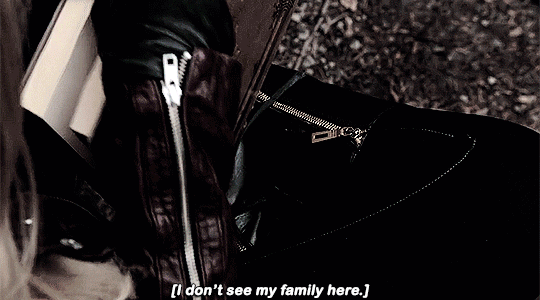
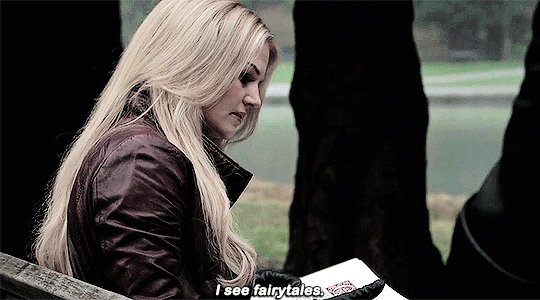
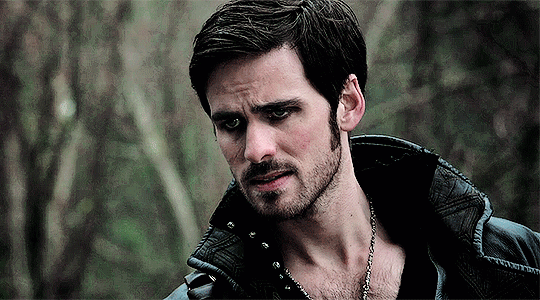
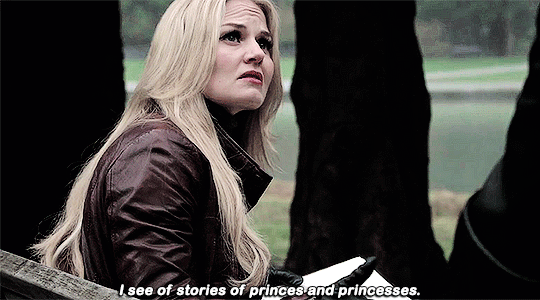

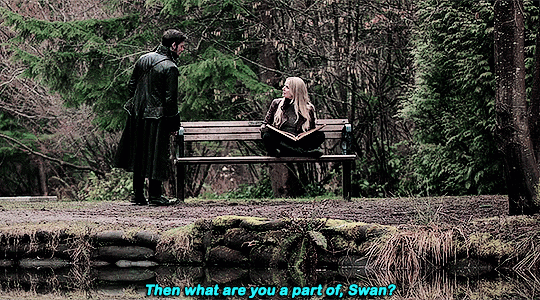


favourite ouat scenes: 77/?
#obsessed with this interaction. what a beautiful heartfelt way to kick off the captain swan movie#prev tags are sooooo right#once upon a time#ouat#captain swan#I do love that Killian doesn’t negate any of the things Emma says. I love David but especially early in his parenting he tends to do this#(which is a deliberate characterization device and I am here for it)#instead he gently probes for more information on her perspective#also one of the most enduring tragedies of ouat#is the fact that Emma who grew up feeling so unloved and unwanted#was in fact the product of true love and was SO wanted and loved that her parents sacrificed everything to save her#and it’s something they spend much of the series reckoning with and it’s so poignant#question - if she had gone with them to storybrooke in the curse -#would she have been stuck as a newborn for 28 years? 🤔#probably something you shouldn’t think too hard about lol
240 notes
·
View notes
Text
The Falcon and the Winter Soldier: One World, One People (1x06)
Oof, okay, so I obviously enjoyed watching this, but I do have some things I would like to discuss.
Cons:
The biggest one is honestly about Isaiah. I understand that this is a superhero show, and there's some cheesiness baked into the very concept of it. I like the idea of a triumphant ending for our heroes, where amends are made and everyone is brought some measure of peace. BUT, I feel like a more nuanced, more true to reality ending here with Isaiah might have been different. Maybe he gives a tip of the hat to Sam, says he's happy he's found his peace, but he still doesn't agree with his choices. See, the thing is, some people who have been hurt by systems want that system to acknowledge its mistake, to apologize, to make amends. That's what Sam is pushing for. He believes we can do better, and all that. And that's a wonderful perspective. But other people who have been hurt by systems might not want anything to do with that system ever again. At the end, when Sam sets up the part of the museum for Isaiah, he says "now everyone will know what you did for this country," and Isaiah seemed pleased and touched by this. But I couldn't help but think... he was forced into doing those things, and then punished for doing them. If he'd decided he didn't want acknowledgment, didn't want to be linked to the idea of American heroism... I couldn't blame him for that. It might have added more nuance to the ending. Sam could have even said that it's okay if he and Isaiah don't agree on the best way forward, they still have mutual respect, or whatever.
As a white lady, maybe I'm off base. I'm just really curious at what the reaction is going to be. All through watching this show I kept saying to myself that an ending where Sam takes up the shield and becomes Captain America can't stand on its own. There's got to be nuance. There's got to be some good justification for it. And as I'll talk about in a moment, I think they've done an okay job... but I also wouldn't be surprised to find some people enormously dissatisfied with this conclusion. Steve Rogers handed the shield to Sam, yes. But should we forget what he did before handing it over? Well, he walked away from the government and was on the run because he didn't respect their choices. Just some food for thought.
I also just want to say: ????? to that ending for John Walker? It was so bizarre to see the light banter moment between him and Bucky after Walker had quoted Lincoln. Like... that felt so out of place. And now he's being made into an American agent? I don't understand that random lady's role in events. I don't know if I'm supposed to think it's sinister and creepy as fuck that John still has a uniform, and even the suggestion of authority (I do think it's creepy as fuck, for the record), or if I'm supposed to be... pleased that he got a new job? Just, tonally, the stuff with Walker in this finale was all over the place. He didn't seem to really matter, and yet he was still there, and the episode didn't seem able to reckon with his presence.
Oh, also, I can totally respect a bit of ham-fisted politic in a show like this. It's really the only way to do it. But Karli saying that Lamar didn't matter, and John saying "you think Lemar's life didn't matter?" was, perhaps, a little on the nose. I'm not sure I like the BLM mouthpiece being blond haired blue eyed John Walker, especially when Lemar's death, at least as a narrative function, only happened to allow John to get sad and angry about it. Where's his wing in the museum, huh?
Also Sharon Carter, she's my girl or whatever, but I gotta admit she was kind of boring to me in this whole series. I wanted more from her. The reveal that she was the Power Broker had me shrugging. I wanted to be more shocked, but she was so clearly telegraphed as being fishy from minute one. The fact is, we haven't had enough time with this character to figure out who she actually is as a person, yet. I don't understand her, and that's a shame.
Pros:
That was a long "cons" section, especially for an episode that kept me riveted the whole way through!
First off, the action was exciting and different and had so many classic "superhero moments" while not totally abandoning a more grounded feel. Sam holding the car up was such a Moment. Also the "that's Black Falcon!" "No, that's Captain America" moment was so cheesy but exactly the right kind of cheesy, you know? We got to see everyone being a bad-ass, crowds applauding, Sam's fantastic entrance with the new suit, the wings, the shield... damn. It was all cool in the way the best Marvel products need to be.
So, Sam taking the shield. I think it works because of his speech to the politicians. Specifically calling out the power they have, and the people they have in the room with them when they make the decisions that will affect so many people. There's this wonderful moment when one of the politicians asks a legitimate question: what about people who came back after the snap to find someone else living in their house? It's so complicated. And as the show ends, we're not given a simple answer. Sam merely points out the miracle of having everyone fighting the same fight for once. These rich and powerful people have had no idea how impossible it can be, and now they're getting a taste of that. There might just be the power of equalizing in all of this.
And most important to me? The government didn't hand Sam the shield. Sam took it and took ownership of it on his own terms. Think back to the legacy of Steve and the shield, honestly. Yes, he was given it by the government, but then he stole it when he ran away, then he gave it up, then Tony gave it back to him... it's a lot more complicated than it might first appear. Nobody's going to argue that the shield was Steve's to give, and he gave it to Sam, and Sam took it for his own. That made it work for me, as a direct contrast to the way in which John Walker got his hands on it.
Karli's death was inevitable and tragic. While I never cared all that much for her character as an individual, she worked quite well as a symbol. Sam points this out in his speech as well. Hasn't anyone stopped to wonder why people believed in this cause so much they were willing to die for it? That matters. It means something. And more will follow. I appreciate that the show ends on an ambiguous note. The people in power are still the people in power. And yes, their decision has been postponed. They've decided not to relocate people and replace the borders immediately. But what is the long-term solution? How does the world begin to heal? Well, we don't know. We don't get to see that.
If anyone got short shrift in this finale it was Bucky, but I'm honestly okay with that for a couple of reasons. One, this is Sam's show and I'm happy that it stayed that way. And two, we saw Bucky's emotional arc come to a head in last week's episode. The work isn't done, but he knows what the work is that he has to do, and we see him start to do that. He gives the journal up to his therapist. A way of letting go of his guilt, but also of saying goodbye to Steve in a way that can give him some actual closure. He confesses to his friend Yuri what really happened to his son.
And more than all of that, he shows up to hang out with Sam and his family. He brings cake. He goofs off with the kids. He hugs his friend, his partner, Sam Wilson. I can see Bucky coming to peace with some things. Coming into his own. It breaks my heart that we don't get to see more of that play out on screen. The show had to make a choice about whose story to prioritize, and in my opinion it made the right choice. This was a show about Sam's journey and Sam's decision here at the end was the capstone of that.
That scene at the end, though... the kids hanging off of Bucky's metal arm was such a poignant image for me, because this man is a killing machine, was designed to be so, but has remade himself into something else, and this moment really showcased that. Also, that gay-ass ending of Sam and Bucky looking out over the water together and then strolling away, Sam's arm around Bucky? Thank you for my life, Disney, I guess. And we got Bucky calling Sam "Cap," and his obvious admiration and pride in him for his speech... I just love them, y'all. I really do.
I wouldn't say anything about this show broke the mold or made me really excited about Marvel again. I enjoyed it, because I already liked Sam and Bucky, and I got to spend more time with them. I was nervous about how they were going to navigate certain political stickiness, and honestly I think they did... an okayish job. I could have wished for them to go even further, but they didn't take the easy way out, in my opinion.
I hope they make more of this someday. Regardless, I'm not ready to say goodbye to Sam Wilson or Bucky Barnes, so I hope we get to see Captain America and the White Wolf grace our screens again in some project or other!
8.5/10
#review#fatws#fatws review#the falcon and the winter soldier#the falcon and the winter soldier review#falcon and the winter soldier#falcon and the winter soldier review
9 notes
·
View notes
Quote
When we think of documentaries, we often think of the films that investigate harsh truths about our world. The Oscar tends to go to a documentary that delves into the underbelly of Mexican cartels, details the atrocities of war in the Middle East, or investigates systemic poverty in our own backyard. Of course, this sort of documentary is essential. A documentary like Super Size Me, Icarus, or 13th can change the way we think about the world. But, documentaries about art and creativity can change the way we think about the world as well. A documentary that focuses on the possibilities of creativity can move us just as deeply as a film that shines a light on the darkest depths of humanity. Let’s look at some of the documentaries that you can watch today on Netflix that might inspire you with their visions of compelling artistry, incredible design and bursting creativity. If, in your life on Earth, you can find the joy that Iris Apfel has found, then yours will have been a life well spent. Interior designer and fashion icon Iris Apfel captured the attention of the New York style scene decades ago and never let go, curating her homes and her personal style in a way that “larger than life” only begins to describe. Apfel first arrived on the New York fashion scene in an entirely unorthodox way by today’s standards. She and husband Carl Apfel ran a textile company together. She would also work as a writer at Women’s Wear Daily, as an interior designer, and as an illustrator’s assistant. Later in life, she got into historical restoration, which brought her in contact with a number of celebrity clients, including nine presidents. The comfort that her ventures afforded her allowed her to collect an impressive, and impressively strange, array of objects, trinkets and accessories, including an oversized RCA dog, ornate vases, and various and sundry huge, colorful bracelets and necklaces. And then there are the clothes. Her fashion collection grew so immense that the Met was able to build a special exhibit from just a small piece of her massive holdings. Apfel insists on being called “The Geriatric Starlet” to this day, and after watching this breezy 80-minute film, you’ll be convinced no one has ever earned the title so thoroughly. Not only one of the best documentaries about art, Exit Through the Gift Shop is viewed as one of the great film works of the 21st century so far. In Exit, famed British street artist Banksy tells the story of Thierry Guetta, a French emigre to the United States who is obsessed with street art. What we have then is a documentary about a man who is obsessed with Banksy (and documenting himself), directed by Banksy. You won’t be surprised to hear that Exit Through the Gift Shop also premiered to a degree of controversy. We are talking about Banksy after all. It almost seems too good to be true, and many observers suspect it is. For his part, Banksy has maintained that the film is “real.” Though, after you watch the film, you’ll likely spend some time considering what, exactly “real” means. The film becomes a meditation not just on street art or “conceptual” art, but on the nature of art, fame, and authenticity. As the first African-American animator hired by Disney, Floyd Norman made history. He went on to have an incredible career, working on classic films like Sleeping Beauty, 101 Dalmations, and The Jungle Book. If his work at Disney had been his only contribution to animation, he would have been a legend in the field. But, Norman went on to work at Hanna-Barbera and Pixar, where he worked on Scooby-Doo and Toy Story 2, respectively, before retiring at age 65. Later in life, Norman invested himself in mentorship, and continues to attempt to develop the careers of others even though he is now over 80 years old. Rarely do artists get the chance to demonstrate the political courage that Sun Mu has in his life, and almost never do they rise to the challenge in the way he has. Beginning his career in North Korea as an anti-regime propagandist, and going on to continue his art after being exiled, Sun Mu is a true artistic renegade. The film follows Sun Mu as he prepares to go undercover for his first solo exhibition in China, where he is truly risking danger for his art. During the film, Sun Mu never shows his face to the camera and every appearance he makes is shrouded in shadow. Even his name keeps him anonymous, as it simply means, “No boundaries.” I Am Sun Mu offers a close-up look at the immediate danger and admirable bravery that comes with being a true political dissident. Art can be a weapon, and watching someone wield their art in this way is truly inspiring. It’s difficult to imagine the stress and pressure that would go into creating a collection for a major fashion house. Dior and I offers the insider’s point of view that means you don’t have to wonder anymore. The film follows Raf Simons as he creates work for Christian Dior, and the highs and lows that come with becoming fashion royalty. Dior and I meditates on the concept of the Belgian designer Simons finding his place in the storied fashion house. Though Dior himself has been dead since 1952, his ghost haunts the film, as Simons reckons with his legacy while trying to define his own. Simons doesn’t speak French; he is a minimalist: will he fit in? Beyond the fashion world, Dior and I admirably tackles an age-old issue that plagues many great artists. How do you honor the job you’ve been tasked to do and your own artistic voice at the same time? There are still rags to riches stories, or at least farmhouse to fashion house stories. This was the trajectory of Jeremy Scott. His childhood was spent on a small-town farm, and now he is the creative director of Moschino. As with many people from rural areas or difficult circumstances, Scott has carried a piece of his upbringing with him as he’s navigated the fashion world. Scott was rejected from FIT because of a “lack of creativity and originality.” He overcame that to become head of a fashion house. Then, he was derided by critics, even as fans embraced his work. And now, even at the top of his game, he maintains a carefully curated cavalier attitude that betrays just how much he really cares. Perhaps the most poignant sequence in the film shows him going back home to visit the farm where he was raised. There we see something that many of us know all too well: you never really leave home, no matter how far you go. Creating meaningful art means taking risks. Few artists have taken the kind of risks Ai Weiwei has. The Chinese artist, sometimes called the “Chinese Warhol,” has often found himself at odds with China’s one party regime during his career. That hasn’t stopped him from continuing to push boundaries with his work. Director Alison Klayman started documenting Ai Weiwei at an interesting time. In May of 2008, a massive earthquake hit the Sichuan Province, which led Ai Weiwei to sharpen his criticism of the Chinese government. The film follows Ai Weiwei as he continues to create art despite harassment from the state. The film ends with authorities trashing Ai Weiwei’s studio and assaulting him. While this is a horrific moment, the viewer is also meant to appreciate that for Ai Weiwei, there is no separation between his art and his activism. You’ve probably sampled a number of the original fictional series released on Netflix lately. It’s tried to do the same thing with documentary, and Abstract is one of its most rewarding attempts. The series tries to get at the heart of what design means, and, perhaps more importantly to the filmmakers, how design works, by interviewing designers in various fields: shoes, theater, cars, and more. Episode two, featuring Nike designer Tinker Hatfield will likely be the most interesting to our readers, but, if you have any interest in design, you’ll want to stick around for the rest of the episodes. Each designer offers a glimpse into a different process, different inspirations, and of course, different products. Documentaries about creatives often take a “life’s work” biographical structure. Here, the series aims to be about process, and while not always perfect, Abstract creates something that is unlike much of what you see in the documentary world: a real glimpse into what goes into creation. We don’t necessarily consider forgers to be artists. This film makes the argument to the contrary. We meet German forger Wolfgang Beltracchi as he nears the end a six-year prison sentence that followed a thirty-year career creating fakes of some of the greatest artists who ever lived. Jail time has not shaken the man’s confidence in his craft: he believes he can forge any artist from Da Vinci to Monet. From there, the documentary demonstrates that he is right. Though the film offers intriguing details about the economic incentives and artistic realities that allow con artists to succeed, it is when we watch Beltracchi work that the film reaches its high point. He pays attention to every detail of his work, from dust on the back of the frame to the smell of the canvass. You quickly grow to understand how someone could be taken in by a fake, especially when the forger creates a piece to fill a “gap” in an artist’s catalog that, if it were real, could be worth millions. But that doesn’t take away from the awe that Beltracchi’s work ultimately inspires. Vivian Maier, a Chicago nanny and housekeeper, was one of the greatest street photographers of the 20th century, and no one knew it until just before her death. Even the people in Vivian Maier’s life didn’t know much about her work. She never exhibited publicly. She lived her life in total obscurity. And yet, she took thousands of pictures that offer a beautiful glimpse into the bygone era of 1950s and ’60s Chicago. The pictures may have remained unknown to the world if director John Maloof hadn’t purchased a lot of her negatives for $400 at auction. The discovery of Maier’s work is valuable not just for the photographs themselves, but also as a springboard for a discussion of art. What makes someone an artist? What makes something art? These questions and more swirl around the subject: a woman who was finally branded an artist when she no longer had a voice in the matter. In recent years, documentarians have taken to highlighting the skills of musicians lost to history. 20 Feet From Stardom told the story of two long-time back-up singers, and 2008’s The Wrecking Crew gives a moment in the sun to unheralded 1960s session musicians. We have all heard songs by The Beach Boys, The Mammas and the Pappas, and The Monkees. What you probably didn’t know is that all of these bands relied on the same session musicians in the studio. Even on immortal albums like Pet Sounds, the titular Wrecking Crew often played the instruments on the recording. Your first thought may be that these players might have some bitterness as they look back at all they didn’t get credit for, but what’s so inspiring about the film is how positively the surviving musicians remember their time in the studio. They were paid to do what they loved, and the entire country got to love it along with them. To a person, the musicians view that era as a golden opportunity and a highlight of their lives. Director: James Marsh Is tightrope walking creative? Is it art? Whatever your view may be, you can’t deny that it is pulse-pounding entertainment. Marsh’s film chronicles Phillippe Petit’s 1974 high-wire walk between the Twin Towers. The film focuses only on the event itself, portraying it with the drama of a heist film. The performance lasted nearly an hour before Petit was arrested, and even his arresting officer had to admit he had beheld a work of art. The policeman said Petit’s performance was like “dancing.” Any artist will appreciate the focus the film gives to the various people on Petit’s team who helped him pull off the legendary stunt. It turns out that the old saying is true: no man walks alone… even on a tightrope. Romance novelists are some of the most derided workaday artists there are. Romance novelists are often women. They write for a predominantly female audience. And they tend to produce work at a prodigious rate. As far as the American patriarchy is concerned, that’s three strikes right there. Director Laurie Kahn offers a different perspective. Rather than beat us over the head with it, she allows it to come organically from the (mostly) women who write, edit, and publish the books that comprise this multi-billion dollar industry. Much of the film focuses on the nuts and bolts of the romance novel industry, which is incredibly interesting. But, the most inspiring moments of the film come from a focus on the community around the books, and the kind of close-knit camaraderie that grows up around writers, publishers, aspirants, and fans of the bodice rippers as they celebrate their passion. Though he was once among the handful of prominent American writers, the younger generations don’t seem to think much about Gore Vidal these days. While he was alive, however, Vidal elevated the role of public intellectual to that of an artist. His debates with conservative William F. Buckley are still viewed as some of the best in American public life. While Buckley’s bigoted worldview hasn’t aged well, Vidal and his massive body of work, hold up as thorough, if often acidic assessments of American life. Vidal published his first novel at age 19, and wrote and spoke prolifically from that point forward. He wrote the comic transgender novel Myra Breckinridge. He wrote the script for Ben Hur. Most memorably he wrote excoriating assessments of the titans American political life. At the end of his career, Vidal amassed of total output of over thirty novels and dozens of non-fiction texts. More importantly, he became one of the great examples of what it meant to be an American voice. What can you do with yarn? If all you’re imagining is a grandmother working on her crochet game, you’ll quickly feel like you lack imagination. Yarn follows a series of artists who are doing amazing things with, yes, yarn. A Japanese artists shows off his yarn-based climbing apparatus. A Polish artists produces crocheted bodysuits. There are even yarn street artists. If you’re feeling a dearth of creativity in your life, Yarn will likely cure what ails you. If you’re left with the sudden urge to pick up some yarn yourself, then, at least you can’t say we didn’t warn you. Next up; here’s how to hack your happiness, according to a new book.
https://www.highsnobiety.com/p/netflix-documentaries-creativity/
0 notes